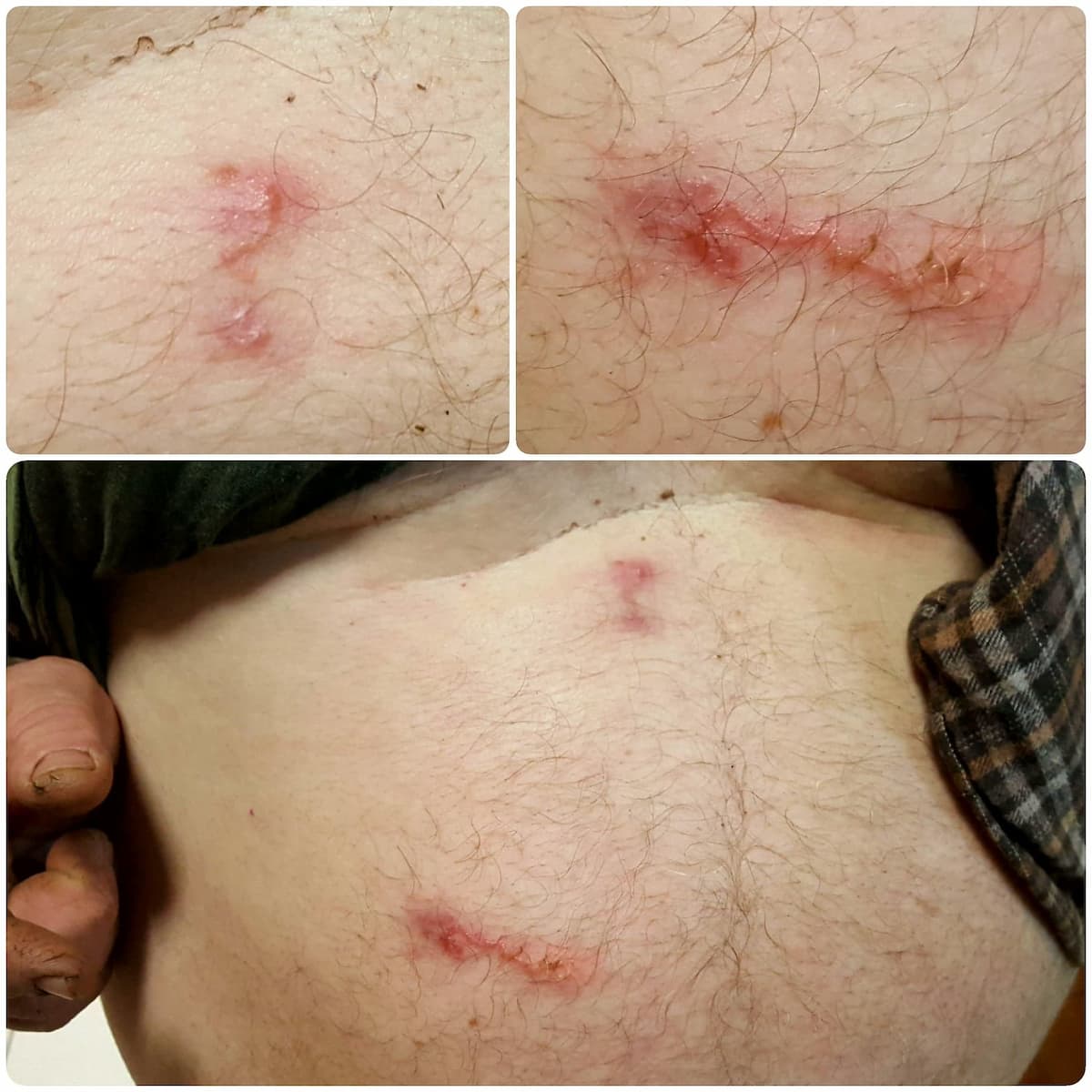A Balkan case of paucilesional truncal autochthonous hookworm-related cutaneous larva migrans contracted during winter in a cowman, successfully treated by 10% albendazole topical preparation.
A 59-year-old male grazier with rheumatoid arthritis in sustained remission under leflunomide, living in a rural semi-mountainous area in the south of mainland Greece (≈37 °N), having never travelled abroad, presented with two tortuous pruritic truncal lesions evolving since November 26, 2017, four days after he cleaned his cowshed.
Examination on November 30 revealed two isolated erythematous papulovesicular linear and serpiginous, well-defined pruritic lesions configuring as slightly elevated subepidermal narrow-width cordons located on the abdomen. (Fig. 1a) There were no systemic symptoms. Patient mentioned a regular contact with his livestock dog. He reported a transient and self-resolved episode of diarrhea in two calves and denied any ingestion of undercooked seafood. Dermatological examination repeated on December 4 confirmed the migratory character of the plaques having progressively advanced by a few centimeters. (Fig. 1b) A clinical diagnosis of autochthonous hookworm-related cutaneous larva migrans (aHrCLM) was made. There was no hypereosinophilia and parasitological fecal analysis for human intestinal hookworms was negative.
With ivermectin not being commercialized in Greece, a 10% albendazole topical preparation was prepared, containing two ground albendazole 600 mg tablets destined for veterinary use mixed in 12 g of crotamiton cream [1]. Its twice-daily application halted rapidly the progression of the serpiginous tracts which entirely and definitively disappeared within eleven days.
As the diagnosis relied on the distinct clinical picture, history and successful response to anthelmintic treatment, the precise causative pathogen remains unspecified. Based on the geographic distribution of zoonotic intestinal nematodes in temperate climates, we assume the most likely culprit hookworm species may have been Uncinaria stenocephala or Ancylostoma caninum (hatched from hookworm eggs excreted in the shepherd dog’s feces) or Bunostomum phlebotomum (derived from the calves) [2]. Differential diagnosis included larva currens due to bovid Strongyloides papillosus or CLM produced by soil-transmitted Pelodera (Rhabditis) strongyloides. To our knowledge, this is the fifth report of aHrCLM in Greece.
Contrary to common hypothesis [3] that aHrCLM may emerge in southern Europe because of warmer climate conditions, our case occurred in the onset of winter with an average area temperature of 14 °C and average relative humidity at 76% [4]. Hence, elevated humidity levels seem to be more critical in enhancing larvae’s pathogenicity than high temperatures.
Autochthonous HrCLM is sporadically observed in Western Europe with few registered cases in the Balkans [5]. It is a particularly shaped infectious dermatosis which may be easily diagnosed. 10% albendazole topical preparation is an effective and low cost medication, accessible even in rural areas.
You may have access to the full text of the article on sciencedirect.com
